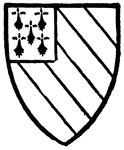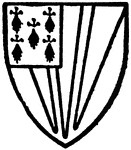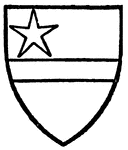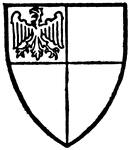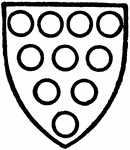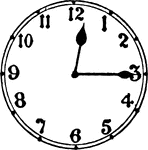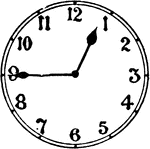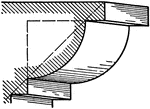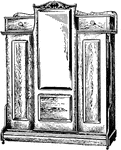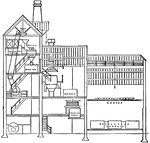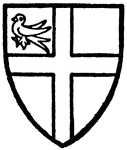
Andrew Harcla
Andrew Harcla, the march-warden, whom Edward II made an earl and executed as a traitor, bore the arms…

First naval battle
"First naval battle in Hampton Roads between the Confederate iron-plated steamers Merrimac, Yorktown,…

Bombardment of Fort Henry
"Bombardment of Fort Henry, Tennessee River, Tenn., by the Mississippi Flotilla, Flag Officer Foote,…

Steamer Alabama
"The Confederate privateer steamer Alabama (290). Captain Raphael Semmes. Our illustration…
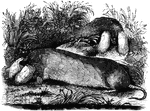
Pouched Rat
"Is of a reddish-brown color above, and dark-brown below; the body, which is stout and cylindrical,…

Lake Providence
"Lake Providence, La., headquarters of General McPherson and the Federal division under his command.…

Confederate rams
"Confederate rams from Charleston Harbor attacking the Federal blockading squadron, January 31st, 1863.…

Sherman's Campaign
"Sherman's Campaign in Georgia- the attack of the Fourteenth, Sixteenth and Twentieth Army Corps on…
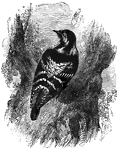
Lesser Spotted Woodpecker
Common in England and distributed across Europe, the lesser spotted woodpecker measures about five and…
St. John's
Military establishment at St. John's. This view is taken from the eastern side of the river, near the…
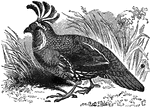
California Partridge
Found in California, the California partridge averages aproximately nine and a quarter inches in length,…
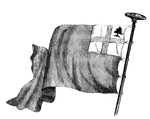
New England Flag
"The New England flag. This is copied from an old Dutch work, preserved in the library of the New York…

European Perch
"One of the best and handsomest of the freshwater fishes of that quarter of the globe." — Goodrich,…
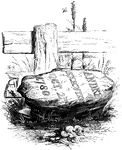
Andre's Execution
"Place of execution. The place of Andre's execution is now designated by a stone, lying on the right…
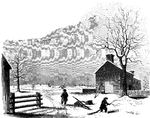
Princeton battle-ground
"View of the battle-ground near Princeton. This view, looking north, is from the carriage gate of Mr.…
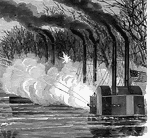
Bombardment of Fort Henry
"Bombardment of Fort Henry, Tennessee River, Tenn., by the Mississippi Flotilla, Flag Officer Foote,…

Bombardment of Fort Henry
"Bombardment of Fort Henry, Tennessee River, Tenn., by the Mississippi Flotilla, Flag Officer Foote,…
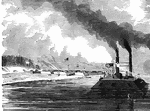
Bombardment of Fort Henry
"Bombardment of Fort Henry, Tennessee River, Tenn., by the Mississippi Flotilla, Flag Officer Foote,…
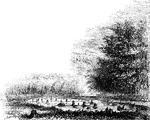
Pyle's Pond
"Pyle's Pond. About a quarter of a mile northwest from this pond, is the spot where the battle occurred.…
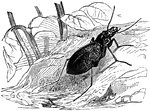
Blue Carabus
"The Blue Carabus, C. cyaneus, is an inch and a quarter long, the body oval, flat, and above…
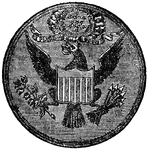
Eagle on Seal of United States
"The Eagle is a gold coin of the United States, value $10; half-eagle, $5; quarter-eagle, $2.50, double…
!["New York is a city in Southern New York; coextensive with New York, Kings, Queens, and Richmond counties, on New York Bay, the Hudson and East rivers, Long Island Sound and the Atlantic Ocean; the first city in the United States in population and commercial importance, and after London, the largest metropolitan center in the world. New York is noted for the number and height of its office buildings. In 1911 there were 50 such structures in occupancy, ranging from 14 to 50 stories in height, or from 179 to 700 feet above ground level, and 16 more were nearing completion. The tallest building was that of the Metropolitan Life Insurance Company, 700 and one quarter feet to top of lantern on its majestic tower. Other conspicuous ones [include the] Park Row, 382 [feet]."—(Charles Leonard-Stuart, 1911)](https://etc.usf.edu/clipart/15600/15666/nyparkrow_15666_mth.gif)
Park Row Building of New York
"New York is a city in Southern New York; coextensive with New York, Kings, Queens, and Richmond counties,…

Sphinx
"Sphinx is a Greek word signifying 'strangler,' applied to certain symbolical forms of Egyptian origin,…

Oscillum
"A diminutive through osculum from os, meaning "a little face," was the term applied to faces or heads…
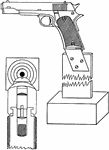
Pistol sighting rest
"To construct a sighting rest for the pistol take a piece of wood about ten inches long, one and a quarter…
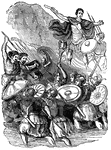
Caesar in England
"All histories of England commence with the invasion of Julius Caesar, the earliest event in that quarter…
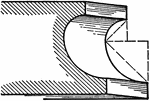
Scotia
A roman moulding, called a Scotia. It consists of two quarter circles one of which has a radius…
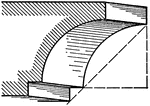
Cavetto
A roman moulding, called a Cavetto. It consists of a quarter circle with a sunk fillet below.…
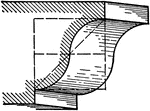
Cyma Recta
A roman moulding, called a Cyma Recta. It is a moulding of double curvature and two fillets.…

Cyma Reversa
A roman moulding, called a Cyma Reversa. This like the cyma recta, is composed of two quarter…
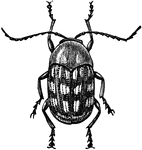
Cryptocephalus
A small beetle, about a quarter of an inch long. Usually a brilliant golden green color.

Morphidae
"The family Morphidae contains the largest and most splendid of the South American butterflies. Their…

Satyrus Balder
"The Satyridae are found in every quarter of the globe, and seem equally at home on open plains, in…

Quarter Clock
"The front view of a large quarter clock of Sir E. Beckett's design, with all the wheels on the great…

Atwood's Machine
"Atwood's Machine. This difficulty has however been overcome by a curious piece of machinery invented…

Moon Phases
"Let S be the Sun, E the Earth, and A, B, C, D, F, the Moon in different parts of her orbit. Now when…
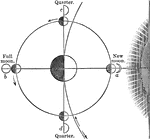
Cause of the Phases of the Moon
During new and full moon, the earth, moon, and sun are all in the same straight line, but, that during…
